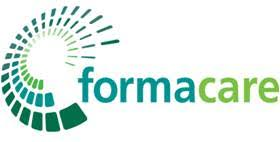Occupational safety and formaldehyde in Europe – a regulatory success story
The question of occupational safety when formaldehyde is involved is a question of constant preoccupation in Europe. The European producers of formaldehyde gathered in the Cefic sector group, Formacare, would like to reinstate that the occupational safety legislation on formaldehyde is a European regulatory success story.
A thorough and science based regulatory landscape
Formaldehyde is one of the most evaluated chemicals globally and one of the first registered substances in REACH (in 2018, ECHA proceeded with a compliance check of the REACH dossier for formaldehyde and found no issues). Besides, the industry continues to keep the dossier up to date on a regular basis and when new scientific evidence is brought to its attention.
Formaldehyde is also one the very few compounds classified as a threshold carcinogen, meaning that it was possible to adopt measures to reduce workers exposure below a scientifically recognised limit to ensure safety. It is the case for formaldehyde since the adoption and implementation of the Binding Occupational Exposure Limit (BOEL) in 2019 under the Third Amendment to the Carcinogen and Mutagen at Work directive (CMD). This amendment was scientifically supported by the opinion of the Scientific Committee on Occupational Exposure Limits (SCOEL) on formaldehyde adopted in 2016. This led to set the BOEL for formaldehyde at 0.3 ppm and was, transposed in all EU Members States since 2021.
The current regulatory framework has proven effective in ensuring the safety of workers and the industry has demonstrated its commitment to meeting and exceeding regulatory standards. It is worth noting that embalmers and the medical sector were granted an additional 3 years transitional period for the implementation of the same BOEL at 0.3 ppm; it will legally apply to these sectors as of 2024. In the meantime, a BOEL of 0.5 ppm still is in place for these sectors.
Formacare supported the proposal from the European authorities and worked jointly with trade unions towards its adoption in 2019.
Yet, and despite the legislation in place, some continue to raise red flags about existing exposure to formaldehyde in the work place. To answer this, it must be reminded that formaldehyde is produced naturally by all living organisms, including humans. The BOEL is already very close to the threshold we reach with that natural production, making a zero exposure level unattainable. Furthermore, exposure to less than 0.3 ppm has been assessed as perfectly safe, in line with the threshold effect of formaldehyde.
A proactive and responsible industry
It is important to remind everyone of the industry's proactive approach, as evidenced by the 99.9% compliance rate achieved before the legal deadline of the 3rd amendment to CMD by the members of Formacare; these amazing results were achieved through a Voluntary Agreement established between Formacare, its members, and the Trade Unions involved in the negotiations for the adoption of the 3rd amendment to CMD: the Formaldehyde Value Chain Alliance received the European Association’s Silver Collaboration Award in 2019 for its work in improving the safety of workers in the formaldehyde value chain. This collaborative effort demonstrated the industry commitment to greater occupational safety from formaldehyde exposure.
A regulatory success story
While the pursuit of enhanced safety measures is commendable, and supported by Formacare, any potential proposal to further lower the formaldehyde exposure threshold would contradict the existing science on formaldehyde and the position of the European Union on these matters. It would also require a comprehensive evaluation of the consequences for the formaldehyde value chain. Such a shift would place undue burdens on many sectors that have already made significant investments in meeting existing requirements, potentially impacting economic viability and job security.
In conclusion, the current state of formaldehyde regulation on occupational safety - marked by the successful implementation of BOEL, voluntary industry agreements, and recognition for safety achievements, is indicative of a proactive and responsible industry. As discussions on further threshold reductions may unfold, it is imperative to balance the pursuit of enhanced safety with the acknowledgment of industry achievements and potential economic ramifications. A holistic and collaborative approach, rooted in science, will best serve the interests of workers, industries, and regulatory bodies alike.

